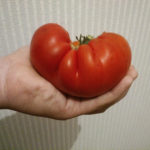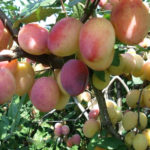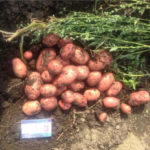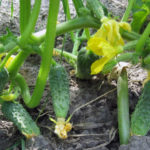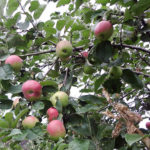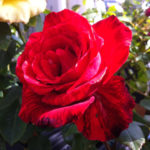Thuja western Columna
Thuja is native to North America. However, today this evergreen culture is grown everywhere, because it is beautiful, not particularly pretentious to care and is able to fit into the landscape of any site, be it a park, square, garden or flower garden. Our story will be about the variety of thuja western Columna (Thuja occidentalis Columna) - one of the currently most popular varieties of the mentioned ephedra.
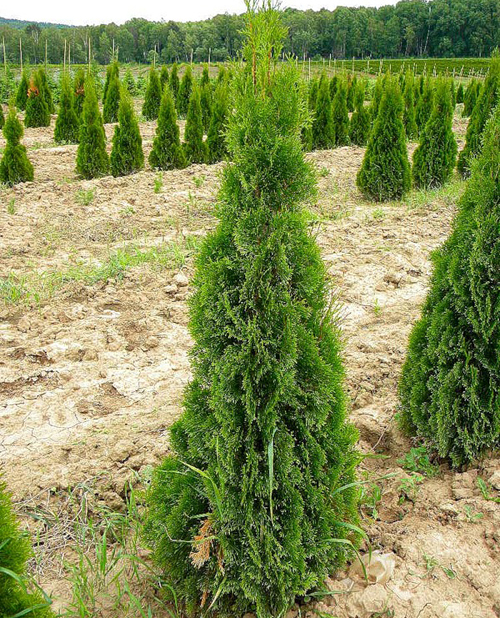
Description
This culture appeared on the territory of Russia in the first half of the last century. So, in the Botanical Garden of the city of St. Petersburg, specimens of this ephedra have been grown since 1936. For such a long time, all the advantages and disadvantages of the variety have been studied very carefully.
Columna differs from its relatives, first of all, in the size and shape of the crown. This is a rather tall ornamental plant, reaching 7-10 meters in adulthood. Its narrow, columnar crown is formed by short shoots, tightly adjacent to each other, which makes it look very dense. The branches extend horizontally from the central trunk. An upright coniferous tree is covered with scaly dark green needles that shimmer in the sun. Its shade remains in the winter season. The cone-shaped top of the thuja is brown with a reddish tint. The trunk and branches of the culture are covered with reddish bark, rough to the touch. In the first year, fruits appear on the plant. They are rounded brown cones with flat, two-winged seeds inside, which serve as breeding material. This variety of coniferous culture is characterized by the presence of a dense root system, consisting of numerous thin shoots like the mycorrhiza of the fungus. This feature allows Columna to quickly take root in a new place after planting, regardless of the type of soil used.

Our heroine differs from other varieties of thuja in the highest growth rate. Over the year, its dimensions increase by 15-30 cm. The growth over a decade is about 3 meters. This is about the height of the plant. In width, the valuable ephedra adds 5 to 7 cm per year. As a result, the diameter of the crown of an adult specimen is approximately 150 cm. The average life of a tree in one place is 200 years.
The variety can withstand fairly low temperatures. Frosts down to -28 ° C do not adversely affect his health. This variety of thuja can be grown in conditions of polluted city air without harm to the decorative appearance and health of the crop. Columna is highly resistant to most diseases and insect pests.
Agrotechnical features
Both a sunny place and an area located in light partial shade are suitable for placing a spectacular ephedra. And yet it is better to choose a well-lit sector of the site for the purpose of planting, since in this case you will get a plant with denser and brighter green needles. The place where it is planned to contain thuja must be protected from cold drafts.
Columna has no complaints about the composition and quality of the soil. However, she has certain preferences in this regard: the plant develops better on loamy, moist, humus-rich soil with a slightly acidic reaction. You can use a potting mix prepared from the following ingredients: 2 parts of leafy soil, 1 part of sand and 1 part of peat. Mineral fertilizers are also applied to the planting pit with a depth of 60 to 80 cm. When the culture deepens into the ground, the root collar is left at ground level. Overconsolidation of the soil under the tree must not be allowed. Between the thujas, a distance from half a meter to 300 cm must be observed. If conifers are planted in a hedge, then this distance is reduced to 0.4 meters. There should be up to 0.7 meters between rows.
After planting for a month, the soil under the ephedra must be moistened weekly, spending 10 liters of settled water per plant. It is important to sprinkle the crown of Columna with a watering can. During the summer drought, the crop, regardless of age, is watered several times a week, increasing the amount of water to 20 liters per specimen.A day after each such water procedure, shallow loosening of the soil under the tree is performed. Then the near-trunk zone is mulched with crushed pine bark or peat 7 cm thick.
Ephedra is responsive to feeding. But this activity is required to be carried out only in relation to young plants - for adults it is unnecessary. Complex fertilizers are used, which are applied under the tree with the onset of spring. At the same time of the year, the crown should be removed from dry shoots, however, this procedure is recommended in the month of March. The plant does not require a shaping haircut.
Columna is susceptible to aphid attacks. These insects spoil the appearance of the crown of a coniferous culture, so it is better to carry out preventive treatment of the plant with karbofos in the spring, without waiting for the occurrence of this trouble. At the same time, reduce the likelihood of a false shield appearing on the plant. From diseases on the thuja, gray rot arises, leading to the death of the scales of the needles. It can be easily cured if the culture is sprayed with Fundazole 1 time in 2 weeks until complete recovery occurs.
Due to its high frost resistance, the ephedra is not covered with the arrival of winter cold weather. Only young plants need insulation in the year of planting. For this, spruce branches are used.
Use cases
The Columna variety is suitable for landscaping areas of any type, including squares, territories at educational and medical institutions, near memorials and monuments; recreation areas, city parks. Landscape designers plant conifers of this variety both singly and as part of group compositions, where an attractive tree is adjacent to herbaceous perennials, shrub forms and other evergreen crops. With the help of this variety of western thuja, specialists decorate heather gardens, narrow hedges and alleys, green labyrinths. It is used not only as a decorative element, but also as a natural source of phytoncides, due to which the atmosphere around the planted columnar trees is cleared of dust and exhaust gases.
